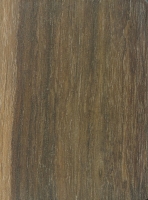 |
Common Name(s): Pau Santo, Brazilian Blackheart Scientific Name: Zollernia spp. Distribution: Brazil Tree Size: 65-100 ft (20-30 m) tall, 2-3 ft (.6-1 m) trunk diameter Average Dried Weight: 70 lbs/ft3 (1,115 kg/m3) Specific Gravity (Basic, 12% MC): .87, 1.12 Janka Hardness: 3,280 lbf (14,590 N) Modulus of Rupture: 27,230 lbf/in2 (187.8 MPa) Elastic Modulus: 2,588,000 lbf/in2 (17.85 GPa) Crushing Strength: 13,850 lbf/in2 (95.5 MPa) Shrinkage: Radial: 5.0%, Tangential: 9.6%, Volumetric: 14.7%, T/R Ratio: 1.9 |
Color/Appearance: Heartwood dark brown, sometimes with a grey or green hue. Sapwood is pale yellowish, and is sharply demarcated from the heartwood.
Grain/Texture: Grain tends to be interlocked. With a fine even texture and excellent natural luster.
Endgrain: Diffuse-porous; solitary and radial multiples; medium to large pores in no specific arrangement, few; mineral/gum deposits occasionally present; parenchyma banded; narrow rays, spacing normal.
Rot Resistance: Rated as moderately durable to durable; good insect resistance.
Workability: Moderately difficult to work on account if its density and interlocked grain. Natural oils may interfere with gluing and finishing. Turns well.
Odor: No characteristic odor.
Allergies/Toxicity: Although severe reactions are quite uncommon, Pau Santo has been reported to cause skin irritation. See the articles Wood Allergies and Toxicity and Wood Dust Safety for more information.
Pricing/Availability: Very seldom available. Limited quantities of craft lumber or turning blanks may be available for a mid to high price for an imported hardwood.
Sustainability: This wood species is not listed in the CITES Appendices, and is reported by the IUCN as being a species of least concern.
Common Uses: Guitars (backs and sides), turned objects, and knife handles.
Comments: Sometimes called Brazilian Blackwheart, woods in the Zollernia species tend to be very dark colored, and very oily. The wood is sometimes used as a substitute for Lignum Vitae.
None available.
None available.
Scans/Pictures: A special thanks to Steve Earis for providing the wood sample and turned photo of this wood species.
 |
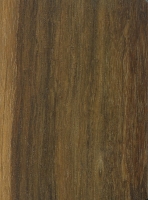 |
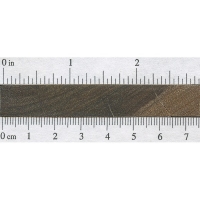 |
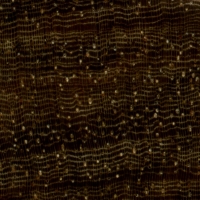 |
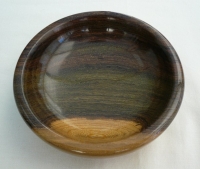 |





A stunning wood. Amazingly dense, easy to work with and takes a high polish with very little effort. You have to bang it pretty hard with a sharp chisel to make your mortices. Saws very nice with a Japanese saw. Nice smell. Some pieces can be highly figured. I built an end table and the wood really makes it stand out. Finished only with lemon oil. As I said it is very dense and the end table weighs 50 pounds. I also made some wooden utensils with the very little I had lest over. Would buy this wood again in… Read more »
Hi Eric, I received a couple of 6 in. long x 5 in per side from the Amazon region. As you can see it is a very dark brown/black wood with very clear sapwood. It is also very dense, hard and heavy . According to the people that sent me these pieces, it is called Palo Cruz, and the scientific name Peruvian books assigned, it is a TEBEBUIA NODOSA. I thought it is like Brazil´s King wood. Do you have an idea of what kind of tree it comes from ? According to Wikipedia, Palo Cruz occurs in Northern South… Read more »
Is this same as Palo Santo?
One of the pitfalls of common names… Generally, the common name Palo Santo refers to what would more commonly be called genuine lignum vitae: https://www.wood-database.com/lignum-vitae/
Thanks!
Palo santo (espanish) or Pau santo (portuguese) is given to many species. Particularly species with a special scent like species in the bulnesia, guayacum or bursera genus. _That is why relaying in common names is a big mistake in wood identification
Here’s 2 people who say pau santo has a nice smell. You state No characteristic odor. Maybe you should change that? I just bought 70 BF of it but don’t know yet first hand.
Most of the palo santo in Argentina is (or used to be) Bulnesia sarmientoi, which I understand had been used as a substitute for Guaiacum officinale, which to the best of my understanding is genuine Lignum vitae.
Yes! And the wood have specific tender odor/fragrance.
I don’t know where I’m supposed to post this but here it is..I recently started a restoration on a sewing machine cabinet for my wife and this was the wood that was under the veneer..the cabinet is from 1927. The veneer was all but falling off..is it poplar or some other kind of wood?